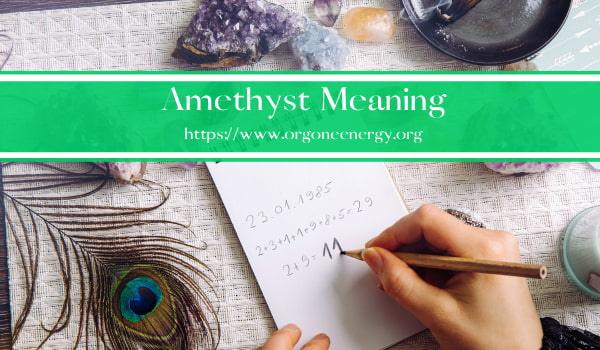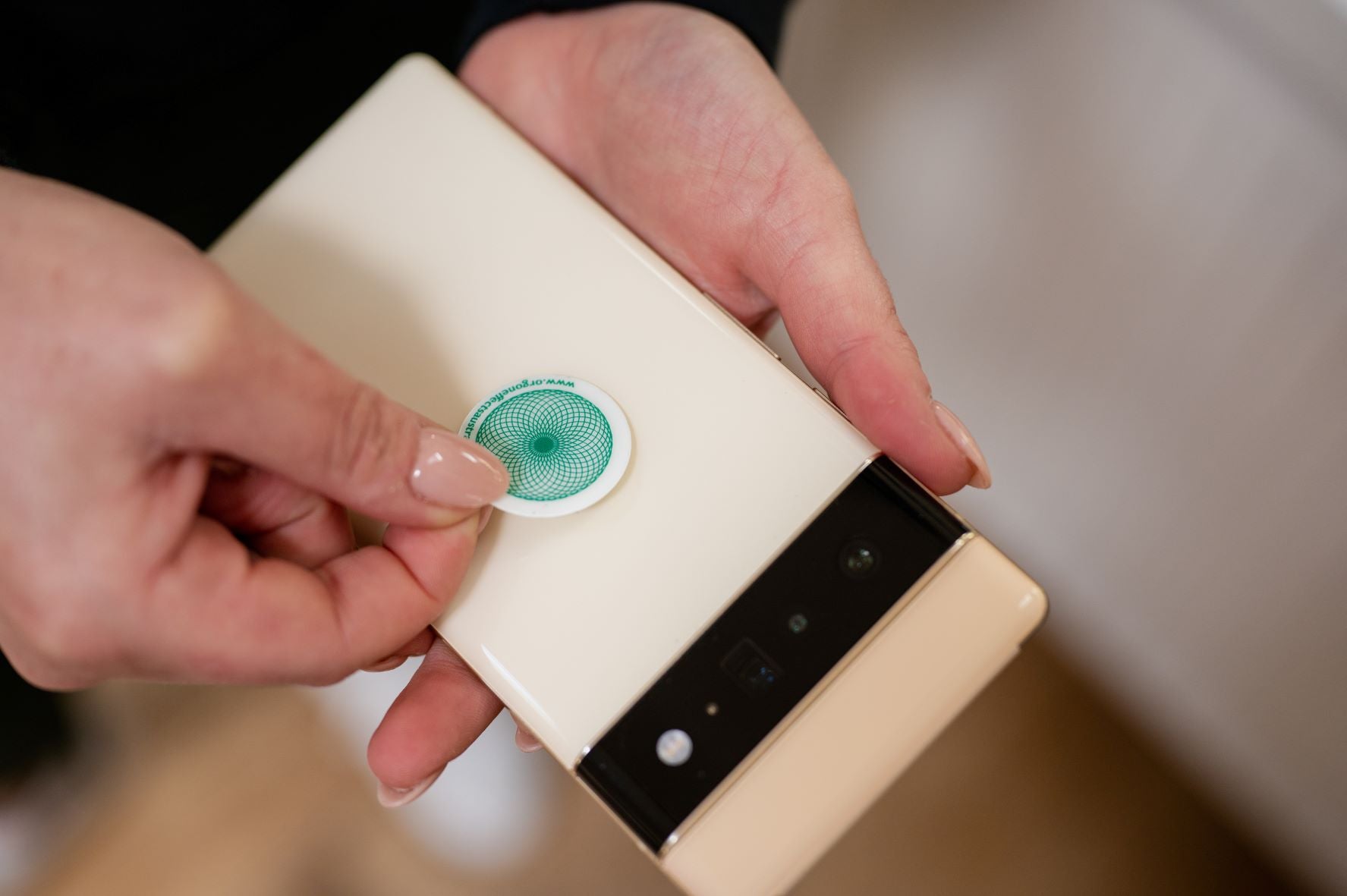Do you have a special connection with Amethyst? People from all walks of life have found these beautiful purple stones to be mesmerizing, and for good reason! As one of the most popular gemstones on Earth, its deep spiritual significance has earned it a spot among the world’s finest treasures.
From healing properties to royalty-worthy grandeur, the meaning behind Amethyst is nothing short of captivating. Whether you’re interested in learning more about this charismatic crystal or simply want an excuse to shop for some gorgeous jewelry, today we will cover everything there is to know about what makes Amethyst so valuable.
Amethyst Meaning

Said to be the link that connects the earthly and the divine; Amethyst's meaning is closely tied to spirituality, particularly the third eye and crown chakras. To find out the true meaning of Amethyst, we look at both the ancient cultural uses and modern uses of the stone. The common use of Amethyst aims to bridge the gap between our physical and spiritual selves, helping us remain steadfast on our journey through the spiritual realm and heightening our awareness.
The name “Amethyst” itself translates to “not drunk”, highlighting its connection to self-control, protecting against addictive or unhealthy behaviors, and fostering sound decision-making without temptation.
Amethyst has been prized for centuries for its captivating beauty and legendary prowess to stimulate and calm the mind and emotions. In today’s classification, it is considered a semi-precious stone but was once regarded as a “Gem of Fire”, a gemstone that at certain times in history was worth as much as a diamond.
Amethyst has always been linked with the month of February; the month dedicated to the Roman water god Neptune. So, it’s no wonder that it is this month’s traditional birthstone. It’s the gemstone of Valentine’s Day and faithful love and, as the bishop’s stone, symbolizes ecclesiastical dignity. It embodies the energies of fire and passion, spirituality, and creativity; However, it carries with it the logic of sobriety and temperance.
Whether the crystals are natural, polished like tumbled stones, or faceted into magnificent jewelry, Amethyst is a gemstone whose beauty transcends its common appearance. It is a type of quartz found in many places around the world. It manifests as clear, terminal crystals of different sizes in clusters, geodes, and long individual terminations. Amethyst also occurs in glassy masses and, when polished, it transforms into remarkable specimens and personal talismans.
Manganese presence in clear quartz gives rise to Amethyst, with varying levels of iron influencing its purple hue. Its color varies from pale crimson to dark purple and can be opaque or transparent. Additionally, it is often coated with white quartz such as Chevron Amethyst, which occurs in conjunction with minerals like cacoxenite, forming intriguing combinations.
One of the most popular healing benefits of Amethyst is its ability to develop the higher mind and also increase passion and creativity. The name Amethyst originates from the Greek term améthystos (αμέθυστος), meaning “not drunk,” rooted in an ancient legend. In this tale, the wine god Bacchus, angered by an insult and determined to take revenge, decreed that the first person he encountered would fall prey to his tigers.
Unfortunately, this hapless soul was a beautiful maiden named Amethyst, en route to worship at the shrine of Diana. When the wild animals appeared, she sought refuge in the goddess and was saved by turning into a transparent white crystal. Bacchus lamented his cruelty and poured the juice of his grapes onto the gemstone as an offering, giving the stone its beautiful purple hue.
Throughout history, Amethyst’s special effect has been to prevent overindulgence and drunkenness. The ancient Greeks and Romans regularly adorned their glasses with Amethyst because they believed that wine consumed from such a vessel would not cause intoxication. Also, they believed that wearing an Amethyst, particularly around the navel, had a tempering effect not only during drunkenness but also during excessive enthusiasm in passion.
Catholic bishops also donned Amethyst in their rings to protect themselves from mystical poisoning. Kissing the ring protected others from a similar mystical state and kept them anchored in spiritual contemplation.
Some historical healing accounts of Amethyst claim its ability to ward off evil thoughts, enhance intelligence, and sharpen business acumen. Travelers wore it as a protection against betrayal and sudden attacks. It also protected soldiers from evil and ensured triumph over adversaries. This stone helped hunters capture wild animals and birds. On the other hand, it was revered as a potent psychic crystal of protection against black magic and witchcraft. Like other regal stones, it offers protection from diseases and infections.
In the spiritual realm, an Amethyst stone provided a conduit to the divine. In Hebrew tradition, Amethyst was known as Ahlamah, the 9th stone of the high priest’s breastplate; bearing the engraving of the tribe of Dan. It was also regarded as the twelfth cornerstone of New Jerusalem. For the Egyptians, this was Hemag, which is listed in the Book of the Dead and was intended to be fashioned into heart-shaped talismans for burial.
In Eastern cultures, it was included in descriptions of sacred “jewel cities” and “trees of life”, often offered in temples as a token of devotion. It has also often been used to harmonize astrological and planetary influences. Additionally, Amethyst was favored in prayer beads and rosaries. It is credited with creating an atmosphere of divine calm and instilling a sense of mental peace and tranquility.
In contemporary times, Amethyst meanings are similar to those of its historical roots. It remains a remarkable stone of contentment and spirituality; recognized for its metaphysical abilities to calm the mind and stimulate a heightened meditative state. Its innate high frequency cleanses the aura of attachments or negative energies. It forms a protective shield of illuminating energy around the body, enabling clarity and centeredness while inviting spiritual guidance.
Amethyst stimulates the crown, third eye, and etheric chakras, improving cognitive perception and accelerating the development of psychic and intuitive abilities. It awakens wisdom and greater comprehension, providing solace to those mourning the loss of a loved one.
Amethyst’s ability to develop the higher mind also fuels a person’s passion and creativity. It strengthens intuition and imagination, refining cognitive processes, facilitating the assimilation of novel ideas, and propelling projects toward fruition. Amethyst is also known as a talisman of concentration and success.
Amethyst is an incredible crystal to wear on the body, use in healing rituals, and beautify the environment. It is known to fade in direct sunlight and caution is advised. It is also good to purify your energies regularly by holding the gemstone under running water for a short time, making sure the gemstone is cleared. Keep the raw Amethyst stone near other crystals to revitalize them.
Amethyst Meanings in Ancient Tradition and History

According to the Roman poet Ovid, Amethyst was a nymph who found herself pursued by Bacchus. In her desperation to evade him, she invoked the goddess Diana, who saved her by transforming her into a radiant gemstone of “pure, cold crystal.” Enraged, Bacchus flung his wine-filled cup onto the stone, which turned it purple.
This legend finds variation in different accounts, sometimes featuring the Roman god of wine Bacchus, and at other times the Greek god of drunkenness Dionysus. Regardless, all narratives credit wine for giving the crystal its color.
The use of amethyst dates back to 25,000 BC with the Neolithic communities in Europe. Its spiritual and mythic properties have made it popular in various cultures for crafting beads and amulets. It was later used as a royal stone for scepters, crowns, and jewelry.
In ancient Egypt, it was used as a healing gemstone to relieve anxiety and guilt and as a powerful protector when traveling. The Romans and Greeks frequently turned to it for protection against excessive indulgence in food and drink, while its powerful mental healing properties made it valuable to place under the pillow before bed to cure insomnia and induce restful sleep. To alleviate headaches, it was heated and applied to the temples or forehead to reduce pulsations.
Peruvians believed that engraving the names of the moon and sun on an Amethyst and wearing it around the neck with baboon hair or a swallow feather acted as a charm against witchcraft. Similarly, the renowned philosopher Pliny the Elder asserted that an Amethyst engraved with the sun and moon figures made people immune to poisons.
An Amethyst adorned with an engraved bear was believed to scare away demons and defend its wearer and protect them from drunkenness. It was popularly considered a means of keeping fleas away from animals. It was once believed that speaking a person’s name into an Amethyst could invoke their love, even if they were engaged to another person.
Amethyst is documented as the twelfth foundational stone of the New Jerusalem. Some said it was named after the apostle Matthew and symbolized his sobriety and conversion. In the 1st century, Andrew, Bishop of Caesarea, associated the fiery aspect of Amethyst with Matthias. Matthias was chosen by the apostles to succeed Judas after he betrayed Jesus and, like Amethyst, was filled with heavenly fire and zeal.
The Rosicrucian society, which united pagan and Christian figures and types, considered the Amethyst and its color to symbolize the divine male sacrifice since the color and stone symbolize passion, love, truth, hope, and suffering. The love of Christ led to his ultimate sacrifice and suffering the agony of the cross, followed by resurrection. This gave rise to humanity’s hope of enjoying eternal bliss in heaven.
Amethyst should also be worn on Thursday, the “Day of Thor.” It is considered the jewel of spring. Although it was traditionally gifted on the 17th wedding anniversary, it is now designated as the official sixth wedding anniversary gemstone.
Meaning of Amethyst in Talismans and Amulets

In ancient times, Amethyst was a protective amulet that Egyptian dignitaries wore around their necks when traveling outside of their major cities. They believed it protected them from betrayal and personal ambushes.
A talisman of spiritual protection and ecclesiastical dignity, Amethyst is revered as the bishop’s stone. It’s still worn on the middle finger of a Catholic bishop’s right hand. This gem is a talisman of success and concentration used in meditation to nurture creativity and refine cognitive skills.
Amethyst embodies the qualities of a Seeker Transformer crystal. Seekers are believed to contain a crystalline energy structure that aligns the natural energy of the crystal with the natural power of the human spirit to find the path to uncharted territories and newfound abilities. They are indicators, milestones, and compasses; the crystals of new beginnings. Seeker crystals are cherished by scientists, adventurers, hunters, wanderers, and explorers, as well as by students and researchers.
Transformative crystals amplify efforts to shift our prospects, circumstances, health, perspectives, or relationships. Through this transformation, we reshape our lives. We learn new skills, and languages, grow in strength, or become better partners or children. Seeker crystals infused with the earth’s transformative energy are invaluable talismans that support us in our efforts to grow, develop new abilities, and transform our lives.
How to Use Amethyst for Healing
Jewelry

Amethyst’s durability and accessibility make it a popular choice for jewelry. The richest and more intense purple hues are highly sought after and consequently more valuable. Beyond its aesthetic appeal, the benefit of wearing amethyst is that it can alleviate anxiety and balance the chakras.
Home Décor

Amethyst geodes and clusters are popular additions to home décor. Some Amethyst pieces are large enough to stand upright and can reach several feet in diameter. Other pieces are smaller and can be mounted on wooden bases and integrated into desk lamps. While preference plays a role, all varieties of Amethyst emit a vibration.
Sleeping

Placing an Amethyst near your bed or holding a small piece while you sleep can align your chakras with its soothing energy. For comfort, opt for a tumbled variety if you are placing it directly in your bed.
Healing

Amethyst towers are powerful tools for healers, known for their ability to channel and amplify energy, making them perfect for clearing blockages and promoting holistic well-being. Additionally, Amethyst spheres are revered for their harmonizing properties, facilitating a deep sense of inner peace and balance, helping in meditation and energy work.
Meditation with Amethyst
Crystals and stones are particularly powerful for meditation because they hold untapped energy awaiting release. Whenever you connect to a crystal or stone during meditation, you can feel the vibration and use it to open the chakras.
Final Thoughts on Amethyst Meaning
While crystal healing should never act as a substitute for professional medical advice, the amazing Amethyst crystal meaning resonates with healing parts of the self in ways that go beyond traditional medicine. Its power reaches even into the physical realm and works to heal on both inner and outer levels. With its calming influence, it helps you protect, relax, meditate, and sleep more deeply – new and beneficial habits to practice during any tumultuous time.
And whatever intention you’re carrying with Amethyst, it arrives with support and understanding. Whether you need some extra spiritual or physical protection, an energizing boost, or some peace of mind – Amethyst is always there to provide guidance.
So why not embrace Amethyst’s unique power by investing in an Amethyst necklace, bracelet, ring, beads, tower, or sphere – whatever works with your energetic intentions. Enjoy all that this powerful crystal can offer and stay connected to your intuition!




